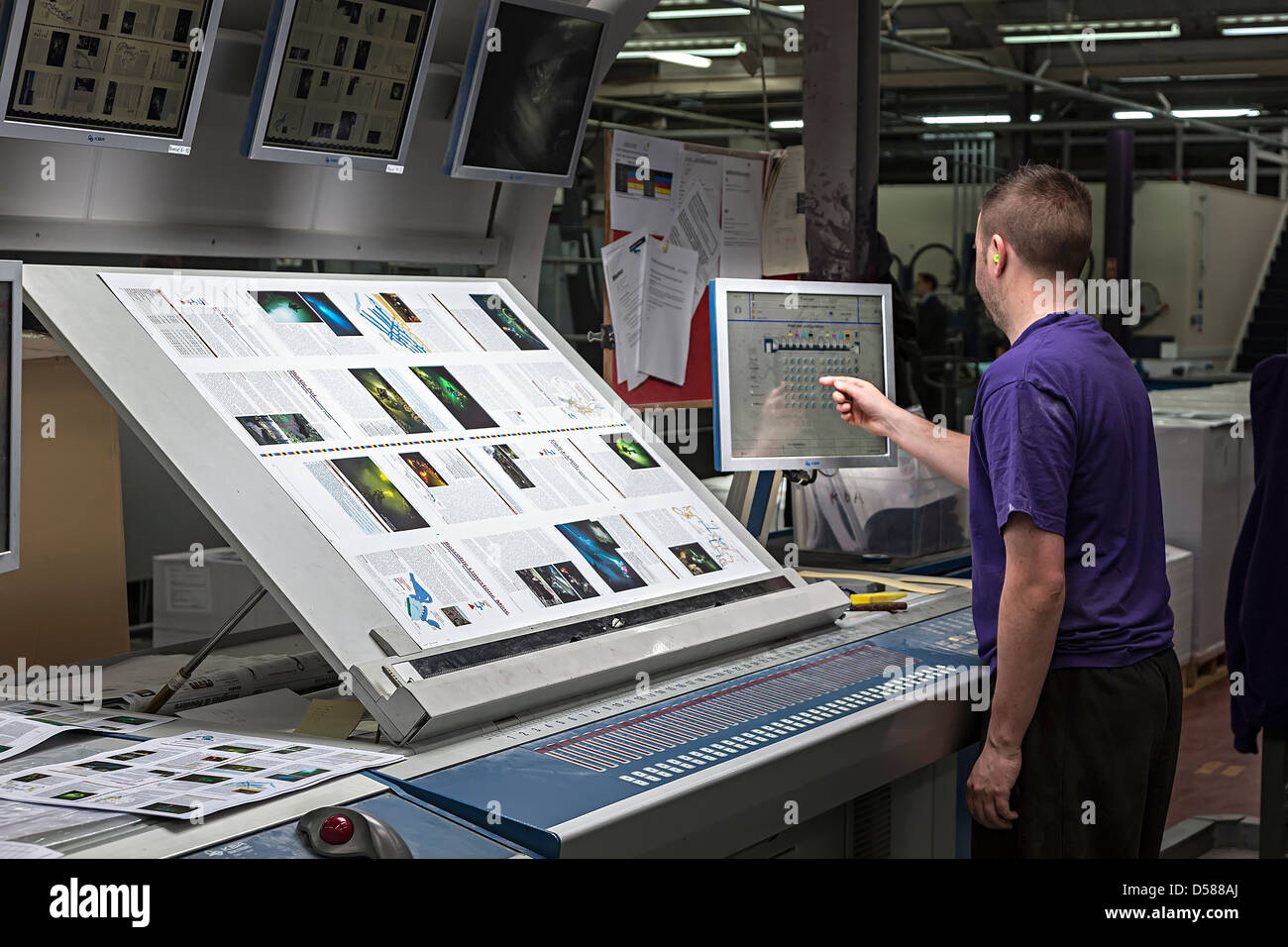A Comprehensive Overview to Understanding Litho Printing Strategies
The globe of litho printing, a technique originating from the late 18th century, is a fascinating mix of history, scientific research, art and development. Remain with us as we journey into the fascinating world of litho printing.
The Historic Evolution of Litho Printing
The historical trajectory of litho printing, an essential technology in the realm of communication, is a fascinating story of human resourcefulness. Birthed in the late 18th century by Alois Senefelder, this technique was at first a cost-effective approach of publishing staged jobs. Lithography, originated from the Greek words for 'rock' and 'to create', made use of a smooth rock surface to transfer images onto paper. The process developed with the introduction of the rotary press, which substantially raised performance (litho printing). In the 20th century, the innovation of offset lithography transformed the industry, permitting automation of high-grade prints. Each phase of litho printing's advancement showcases mankind's unrelenting search of performance and top quality in aesthetic interaction.
Decoding the Scientific Research Behind Litho Printing Inks
Progressing in the exploration of litho printing techniques, the emphasis currently moves to the scientific research behind litho printing inks. The structure of these inks, their drying out process, and color mixing strategies create the foundation of this complex art kind. Recognizing these elements is important to mastering the craft and attaining the preferred print results.
Make-up of Litho Inks
In lithographic printing, the essential function of litho inks can not be overemphasized. Pigments, the color-providing components, are finely ground bits suspended in the automobile, a liquid that carries the pigment onto the printing surface. Each element plays a vital component in the last print's quality, making the accurate formula of litho inks a complex scientific research.
Ink Drying Refine
From the make-up of litho inks, attention turns to the fascinating process of ink drying. The drying process is vital, as it influences the last print's top quality and longevity. Two primary approaches are used in litho printing: oxidative drying and absorption. Oxidative drying involves the ink responding with oxygen airborne to create a tough, completely dry movie. This approach gives a durable finish, but can be slower contrasted to absorption. Absorption, on the various other hand, entails the ink permeating right into the paper fibers, which is a quicker procedure however can result in less dynamic shades. The selection in between these techniques depends on elements such as print rate needs, the paper type utilized, and the desired finish.
Shade Mixing Strategies
While the drying out procedure plays a crucial role in litho printing, the scientific research of shade mixing methods holds equivalent importance. The scientific research behind litho printing inks likewise takes right into account the transparency of the ink, which affects exactly how shades overlay and mix.
The Art and Style Elements in Litho Printing
Litho printing takes a breath life right into art and design through its unique components. Litho printing suits a range of shades, enabling artists to develop lively and vibrant prints. This mix of accuracy and convenience makes litho printing a favored option for numerous musicians and developers.
Modern Applications of Litho Printing Methods
Litho printing techniques have actually found extensive usage in the modern-day business look at here industry. Its influence and relevance proceed to grow with the advent of new technologies and innovations in the area. This section will certainly explore these modern applications and the transformative function they play in the printing industry.
Commercial Litho Printing Makes Use Of
Litho printing stays a critical component of the business field. High-volume printing jobs, such as the manufacturing of publications, papers, and product packaging, count on litho printing for its capacity to supply premium photo quality and price effectiveness. Litho printing also provides a wide color spectrum, exceptional to that of electronic printing.
Advancements in Litho Printing
Pressing the limits of standard methods, contemporary developments have fueled a host of technologies in litho printing. These innovations have not just enhanced the high quality and efficiency of litho prints but additionally increased its application range. One popular development is electronic litho printing, which integrates the virtues of electronic modern technology with litho's top notch outcome. This hybrid version supplies faster arrangement times, decreased waste, and enables on-demand printing. An additional remarkable innovation is the introduction of eco-friendly inks. These inks, made from vegetable or soy-based solutions, have actually considerably reduced the sector's environmental influence. litho printing. Furthermore, the development of innovative plate innovation has structured the printing process, causing sharper pictures and boosted color integrity. These advancements underscore the long-lasting relevance of litho printing in the contemporary world.
Discovering the Process of Litho Printing: Detailed

Difficulties and Solutions in Contemporary Litho Printing

Regardless of the precision and practice that litho printing proudly supports, it is not without its collection of contemporary difficulties. One of the most common problems include the high preliminary arrangement cost, problem in printing variable information, and environmental issues as a result of chemical use. Remedies are arising as technology progresses. Digital litho printing enables economical brief runs and easy personalization, attending to the issue of variable information. Environmentally-friendly inks and more secure plate-making processes alleviate ecological issues. In addition, innovations in automation have reduced labor expenses, additionally equalizing the lithography procedure. Hence, while there are obstacles, the litho printing sector is proactively adjusting to fulfill them head-on, guaranteeing its relevance in the future.
Conclusion
In final thought, litho printing, with its rich history and clinical complexities, holds a considerable place in the print market. The future of litho printing pivots on its capacity to adjust to these altering demands, attesting its enduring value in a developing market.
